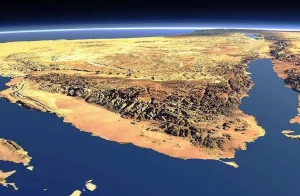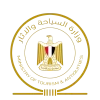Sinai Peninsula

Sinai Peninsula through the years
Sinai is the holy land which was always an extraordinary scene of great events. It was always a bridge of prophets and apostles. It received the prophet Moses and his people after the Exodus from the Nile Valley in Egypt. After that, Moses received the 10 commandments of God, and performed the great miracles on its land. Afterwards, the Holy Family passed through this land fleeing from the persecution of king Herod directing to Egypt for being a safe place. They stayed there for about 3 years. Sinai was the bridge for most external invasions. The army of the Arab Muslims, who conquered Egypt to free the Egyptian, crossed Sinai from the Romans. Subsequently, they promoted Islamic and cultural values with extraordinary tolerance.
The origin name of ‘Sinai‘ is the name of the moon god ‘Sin’. The Semitic tribes worshiped Sin due to the great importance of the moon light in Sinai at night. On the other side, it is the eastern gate of Egypt. Further, it is the main trade route between Egypt and Asia. Especially in northern Sinai along the coast of the Mediterranean sea. Geographically, Sinai occupies only 5% of the total area of Egypt. This Part belongs to Asia while 95% of the territory belongs to the continent of Africa. It is surrounded by water as a large peninsula. While it extends from the Mediterranean in the north, the Suez Canal and the Gulf of Suez in the west, the Red Sea to the South, and the Gulf of Aqaba. It has frontiers with Palestine in the east.
The North and South of Sinai
Sinai Peninsula played a great role in almost all times of Egyptian history. It’s known as Arḍul-Fairūz ‘the Land of Turquoise’ because it is rich with mines of this precious material. The Ancient Egyptians used that material thousands of years ago. Moreover, it was famous for copper mines especially in Wadi El-Magharah and Serabit El Khadim. Sinai has 60,000 square kilometers of area.
Sinai has two provinces or governorates; North Sinai whose capital is the city of Al Arish. South Sinai is the capital of the city of Al Tur. North Sinai is characterized by the fertility of the land because of the usual rain. It falls mainly near the shores of the Mediterranean. So there are farms of distinct species of fruits such as; oranges, mandarins, plum, figs, pomegranate, melons etc. The population of North Sinai is about 450,000.
On the contrary, South Sinai is a mountain region. The mountains are usually dry without abundant water resources. Since these mountains depend on the waters of artesian wells, and the rare rainfall. South Sinai has the most sacred places related to the Exodus. On its land, Egyptians built one of the most ancient and important monasteries in the world. It is called ‘Saint Catherine Monastery‘ or Saint Catherine. In Addition, South Sinai has coastal cities. There are the most famous sea resorts and paradisiacal beaches on the Red Sea. For Example, there are Ras Sadr, Sharm El Sheikh, Dahab, Nuweiba and Taba. The South Sinai population is around 165,000. (2015).





